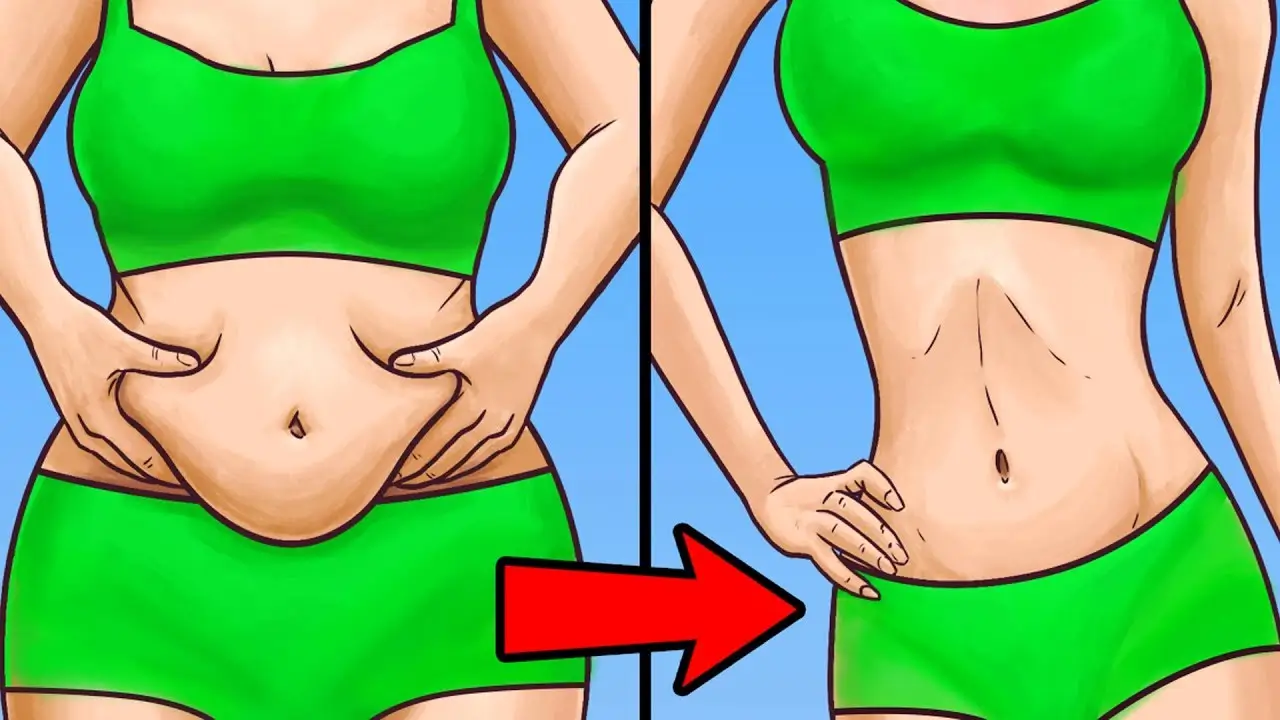How to Get a Flat Stomach Naturally: 25 Science-Backed Strategies

The Truth About Achieving a Flat Stomach
Belly fat is notoriously stubborn due to hormonal factors, genetic predisposition, and lifestyle influences. Many people struggle despite rigorous efforts, leading to frustration and confusion about what actually works.
Spot reduction is a persistent myth—no amount of crunches will specifically burn abdominal fat. Sustainable results require a comprehensive approach addressing nutrition, exercise, and lifestyle factors holistically.
This guide combines the latest scientific research with practical strategies to help you achieve lasting results. You’ll learn why belly fat resists traditional methods and how to overcome these challenges effectively.
Why belly fat is stubborn and common frustrations
Visceral fat surrounding organs and subcutaneous fat beneath the skin have different metabolic properties. Both types are hormonally sensitive and often the last to respond to diet and exercise.
Common frustrations include bloating, slow progress, and rebound weight gain. These typically stem from unsustainable methods rather than personal failure or lack of willpower.
Myths vs. facts about spot reduction
Myth: Waist trainers and ab gadgets create lasting results. Fact: They temporarily compress tissue without affecting fat composition or distribution.
Myth: You need extreme calorie restriction. Fact: Severe deficits often backfire by slowing metabolism and promoting muscle loss.
What really works for lasting results
Proven strategies include balanced macronutrients, stress management, quality sleep, and compound exercises. These methods work synergistically to improve metabolic health and body composition.
Visible changes often follow non-visible improvements like better digestion, reduced inflammation, and stabilized energy levels. Patience with this process yields permanent transformation.
1. Essential Diet Changes for a Flat Stomach
Nutrition accounts for 70-80% of belly fat reduction success. These science-backed dietary adjustments create optimal conditions for fat loss while preserving muscle.

1.1 Reduce refined carbs and added sugars
Refined carbohydrates and added sugars spike insulin levels, promoting fat storage around the midsection. Studies show sugar-sweetened beverages increase visceral fat by up to 10%.
Processed snacks, white bread, and flavored yogurts often contain hidden sugars. Even “healthy” foods like granola can be sugar bombs when commercially prepared.
Healthier alternatives to swap in
Choose sprouted grain bread, fresh fruit, and plain Greek yogurt with berries. Satisfy sweet cravings with 85% dark chocolate or homemade protein balls sweetened with dates.
1.2 Increase high-quality protein intake
Protein boosts metabolism by 20-30% compared to carbs and fats. It also preserves lean muscle during weight loss, maintaining metabolic rate.
Aim for 0.7-1g per pound of body weight daily from diverse sources like eggs, wild salmon, grass-fed beef, lentils, and tempeh.
1.3 Eat more soluble fiber
Soluble fiber forms a gel that slows digestion and reduces fat absorption. It also feeds beneficial gut bacteria linked to lower visceral fat levels.
Top sources include chia seeds, Brussels sprouts, avocados, and flaxseeds. Gradually increase intake to 10g+ daily to prevent digestive discomfort.
1.4 Incorporate healthy fats strategically
Monounsaturated fats from olive oil and nuts reduce central obesity. Omega-3s in fatty fish decrease inflammatory markers associated with belly fat accumulation.
Time fat intake around workouts for energy without bloating. Avoid combining fats with refined carbs in the same meal.
1.5 Stay properly hydrated
Dehydration triggers water retention that exaggerates bloating. Adequate water intake supports lipolysis—the breakdown of fat stores for energy.
Drink 0.5-1 ounce per pound of body weight daily. Add lemon, cucumber, or mint for flavor without artificial sweeteners.
1.6 Try intermittent fasting (if appropriate)
Time-restricted eating may enhance fat burning by extending the fasting state. Popular methods include 16:8 or 14:10 fasting-to-eating windows.
Consult a healthcare provider before fasting if you have diabetes or a history of disordered eating. Women may need modified approaches due to hormonal sensitivity.
2. Most Effective Flat Stomach Exercises
Strategic exercise builds metabolic muscle while improving core definition. A balanced routine addresses all abdominal muscle layers for optimal results.
2.1 Core-strengthening moves
Target the transverse abdominis (deep core) for natural “corset” tightening. Include rotational movements to engage obliques for complete development.
Plank variations
Standard planks engage the entire core when performed with proper form. Side planks target obliques, while knee-to-elbow planks add dynamic challenge.
Bicycle crunches
This dual-action move engages upper and lower abs simultaneously. Focus on slow, controlled rotations rather than speed for maximum benefit.
Leg raises
Hanging or lying leg raises effectively target lower abs. Keep movements controlled to prevent hip flexor dominance and protect your lower back.
2.2 Full-body fat-burning exercises
Compound movements burn more calories than isolated ab exercises. They also stimulate growth hormone production for enhanced fat loss.
HIIT workouts
High-intensity intervals create an “afterburn” effect (EPOC) that continues calorie burn post-workout. Alternate 30-second sprints with 1-minute recovery periods.
Compound movements
Squats, deadlifts, and push-ups engage the core as stabilizers. These multi-joint exercises build functional strength while burning fat efficiently.
2.3 Posture-improving techniques
Poor posture exaggerates abdominal protrusion regardless of body fat percentage. Strengthen back muscles and practice alignment for instant slimming effect.
Yoga poses like Cat-Cow and Child’s Pose release tension that contributes to slouching. Consider ergonomic adjustments if you sit for prolonged periods.
3. Lifestyle Adjustments That Make a Difference
Non-exercise factors significantly impact belly fat accumulation. Addressing these often-overlooked areas accelerates visible results.

3.1 Optimize your sleep routine
Sleep deprivation disrupts hunger hormones, increasing cravings for high-calorie foods. Just one week of poor sleep can increase belly fat by 9%.
Establish a consistent bedtime and limit blue light exposure before sleep. Cool, dark environments promote deeper restorative sleep cycles.
3.2 Manage stress effectively
Chronic stress elevates cortisol, which directs fat to the abdominal area. Regular relaxation practices can mitigate this effect significantly.
Proven stress reducers include meditation, deep breathing, and nature walks. Even 10-minute breaks can lower cortisol levels measurably.
3.3 Increase daily movement
Non-exercise activity thermogenesis (NEAT) accounts for substantial calorie expenditure. Small changes like standing desks add up over time.
Track steps and aim for gradual increases. Every 2,000 extra steps daily can translate to noticeable changes over several months.
3.4 Limit alcohol consumption
Alcohol pauses fat burning as the liver prioritizes toxin processing. Mixed drinks often contain belly-fat-promoting sugars and empty calories.
If drinking, choose clear spirits with soda water and lime. Implement alcohol-free days each week to support metabolic recovery.
3.5 Track your progress properly
Waist measurements and progress photos reveal changes scale weight might miss. Measure at the narrowest point weekly under consistent conditions.
Celebrate non-scale victories like improved energy and clothing fit. These indicate meaningful health improvements beyond aesthetics.
4. Special Considerations for Different Groups
Individual factors influence belly fat loss strategies. Tailored approaches address unique physiological needs for better results.
4.1 How to get a flat stomach as a woman
Women’s fat distribution is hormonally influenced, with more subcutaneous belly fat. The menstrual cycle affects water retention and cravings.
Time carb intake around workouts during the follicular phase. Increase magnesium and omega-3s premenstrually to reduce bloating.
4.2 Getting a flat stomach without weight loss
Core strengthening and posture correction can create a flatter appearance at any weight. Focus on body recomposition rather than scale changes.
Pilates and barre workouts lengthen muscles for a leaner silhouette. Proper breathing techniques also engage deep core muscles effectively.
4.3 Addressing bloating and water retention
Identify trigger foods through elimination diets. Common culprits include dairy, gluten, and artificial sweeteners.
Potassium-rich foods like bananas and spinach balance sodium levels. Peppermint tea and probiotics aid digestive regularity.
4.4 Overcoming plateaus
Metabolic adaptation requires periodic strategy adjustments. Change workout intensity, macronutrient ratios, or meal timing every 4-6 weeks.
Reverse dieting (gradual calorie increases) can reset metabolism after prolonged deficits. Focus on nutrient density during this process.
5. Common Mistakes That Prevent Results
Well-intentioned errors often sabotage progress. Recognizing these pitfalls prevents wasted effort and frustration.
5.1 Overdoing ab exercises
Excessive crunches can thicken the waistline by overdeveloping superficial muscles. Balance core work with full-body fat loss strategies.
Three 15-minute core sessions weekly provide sufficient stimulus. Quality trumps quantity in exercise execution.
5.2 Extreme calorie restriction
Severe deficits trigger muscle loss and metabolic slowdown. The body prioritizes fat retention in vital areas like the abdomen.
Aim for a 300-500 calorie daily deficit for sustainable loss. This preserves metabolism while promoting fat reduction.
5.3 Ignoring food sensitivities
Undiagnosed intolerances cause inflammation and bloating. Dairy, gluten, and FODMAPs are common triggers worth investigating.
Elimination diets identify problem foods. Reintroduce items systematically to pinpoint reactions accurately.
5.4 Unrealistic expectations
Visible abs require low body fat percentages that aren’t healthy for everyone. Focus on health metrics beyond appearance.
Genetic factors determine fat distribution patterns. Work with your body’s natural tendencies rather than fighting them.
6. When to Consider Medical Options
Professional interventions may be appropriate when natural methods plateau. Understand risks and benefits before pursuing these options.
6.1 Non-surgical alternatives
Cryolipolysis (CoolSculpting) freezes fat cells for gradual elimination. Multiple sessions are typically needed for noticeable results.
Radiofrequency treatments like Vanquish heat fat cells through the skin. These require maintenance sessions for sustained effects.
6.2 Surgical options (tummy tuck, liposuction)
Abdominoplasty removes excess skin and tightens muscles for dramatic reshaping. This is major surgery requiring weeks of recovery.
Liposuction suctions fat cells but doesn’t address skin laxity. Best for those near ideal weight with stubborn fat deposits.
6.3 How to choose the right professional
Board-certified plastic surgeons offer the highest safety standards. Review before/after galleries to assess aesthetic compatibility.
Consult multiple providers to compare approaches. Beware of unrealistic promises or pressure to undergo procedures.
7. Flat Stomach Foods: What to Eat and Avoid
Strategic food choices support metabolic health and reduce bloating. This comprehensive list simplifies grocery decisions.

7.1 Top 10 foods for a flatter stomach
1. Greek yogurt (unsweetened) – Probiotics support gut health
2. Salmon – Omega-3s reduce inflammation
3. Asparagus – Natural diuretic reduces water retention
4. Green tea – EGCG enhances fat oxidation
5. Kimchi – Fermented foods improve microbiome
6. Almonds – Healthy fats increase satiety
7. Berries – Low-sugar fruits high in antioxidants
8. Spinach – Magnesium prevents bloating
9. Chia seeds – Soluble fiber promotes fullness
10. Ginger – Aids digestion and reduces nausea
7.2 Worst foods for belly fat
1. Soda – Liquid sugar spikes insulin
2. Processed meats – Preservatives cause inflammation
3. Alcohol – Pauses fat metabolism
4. Fried foods – Damaged fats promote weight gain
5. Artificial sweeteners – May disrupt gut bacteria
6. White bread – Rapidly converts to sugar
7. Flavored coffee drinks – Hidden calorie bombs
8. Juice – Concentrated sugar without fiber
9. Margarine – Contains inflammatory trans fats
10. Frozen meals – High in sodium and preservatives
7.3 Sample meal plan
Breakfast: Veggie omelet with avocado
Snack: Greek yogurt with berries
Lunch: Grilled salmon over mixed greens
Snack: Handful of almonds and green tea
Dinner: Chicken stir-fry with quinoa
Dessert: Dark chocolate square (85%)
8. Frequently Asked Questions
How long does it take to get a flat stomach?
Visible changes typically appear within 4-12 weeks with consistent effort. Complete transformation may take 6-12 months depending on starting point.
Can you get a flat stomach in 2 weeks?
Significant reduction is unlikely, but decreased bloating and slight definition are possible. Focus on hydration, sodium control, and core engagement for quick improvements.
Why is my lower belly so stubborn?
The lower abdomen has more alpha-adrenergic receptors that resist fat breakdown. Hormonal factors and genetic predisposition also play significant roles.
How many calories should I eat for a flat stomach?
Calculate your TDEE (Total Daily Energy Expenditure) and subtract 300-500 calories. Extreme deficits backfire by slowing metabolism and promoting muscle loss.
What’s the best workout for a flat stomach?
Combination of strength training (3x weekly), HIIT (2x weekly), and core work (3x weekly) yields best results. Consistency matters more than any single workout.
Conclusion: Your Path to a Flatter Stomach
Sustainable results come from addressing all contributing factors—nutrition, exercise, stress, and sleep. Quick fixes fail because they don’t create lasting metabolic change.
Implement 2-3 strategies from each section for comprehensive progress. Gradual improvements compound into significant transformations over time.
Remember that health indicators like energy levels and lab values matter more than aesthetics. A flat stomach achieved through balanced methods reflects true wellness.






